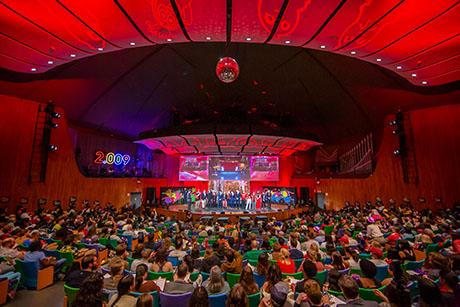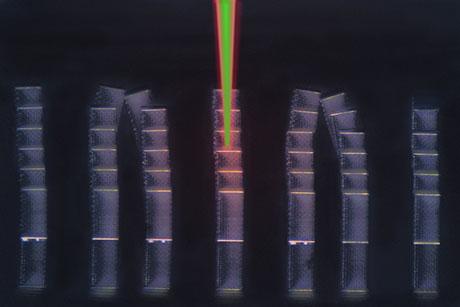Less-wasteful laser-cutting
Laser-cutting is an essential part of many industries, from car manufacturing to construction. However, the process isn’t always easy or efficient: Cutting huge sheets of metal requires time and expertise, and even the most careful users can still produce huge amounts of leftover material that go to waste. The underlying technologies that use lasers to cut edges aren’t actually all that cutting-edge: their users are often in the dark about how much of each material they’ve used, or if a design they have in mind can even be fabricated.
With this in mind, researchers from MIT’s Computer Science and Artificial Intelligence Lab (CSAIL) have created a new tool called Fabricaide that provides live feedback on how different parts of the design should be placed onto their sheets — and can even analyze exactly how much material is used.
“By giving feedback on the feasibility of a design as it’s being created, Fabricaide allows users to better plan their designs in the context of available materials,” says PhD student Ticha Sethapakdi, who led the development of the system alongside MIT Professor Stefanie Mueller, undergraduate Adrian Reginald Chua Sy, and Carnegie Mellon University PhD student Daniel Anderson.
Fabricaide has a workflow that the team says significantly shortens the feedback loop between design and fabrication. The tool keeps an archive of what the user has done, tracking how much of each material they have left. It also allows the user to assign multiple materials to different parts of the design to be cut, which simplifies the process so that it’s less of a headache for multi-material designs.
Another important element of Fabricaide is a custom 2D packing algorithm that can arrange parts onto sheets in an optimally efficient way, in real time. The team showed that their algorithm was faster than existing open-source tools, while producing comparable quality. (The algorithm can also be turned off, if the user already knows how they want to arrange the materials.)
“A lot of these materials are very scarce resources, and so a problem that often comes up is that a designer doesn’t realize that they’ve run out of a material until after they’ve already cut the design,” says Sethapakdi. “With Fabricaide, they’d be able to know earlier so that they can proactively determine how to best allocate materials.”
As the user creates their design, the tool optimizes the placement of parts onto existing sheets and provides warnings if there is insufficient material, with suggestions for material substitutes (for example, using 1 millimeter-thick yellow acrylic instead of 1 mm red acrylic). Fabricaide acts as an interface that integrates with existing design tools, and is compatible with both 2D and 3D CAD software like AutoCAD, SolidWorks, and even Adobe Illustrator.
In the future the team hopes to incorporate more sophisticated properties of materials, like how strong or flexible they need to be. The team says that they could envision Fabricaide being used in shared makerspaces as a way to reduce waste. A user might see that, say, 10 people are trying to use a particular material, and can then switch to a different material for their design in order to conserve resources.
The project was supported, in part, by the National Science Foundation.


